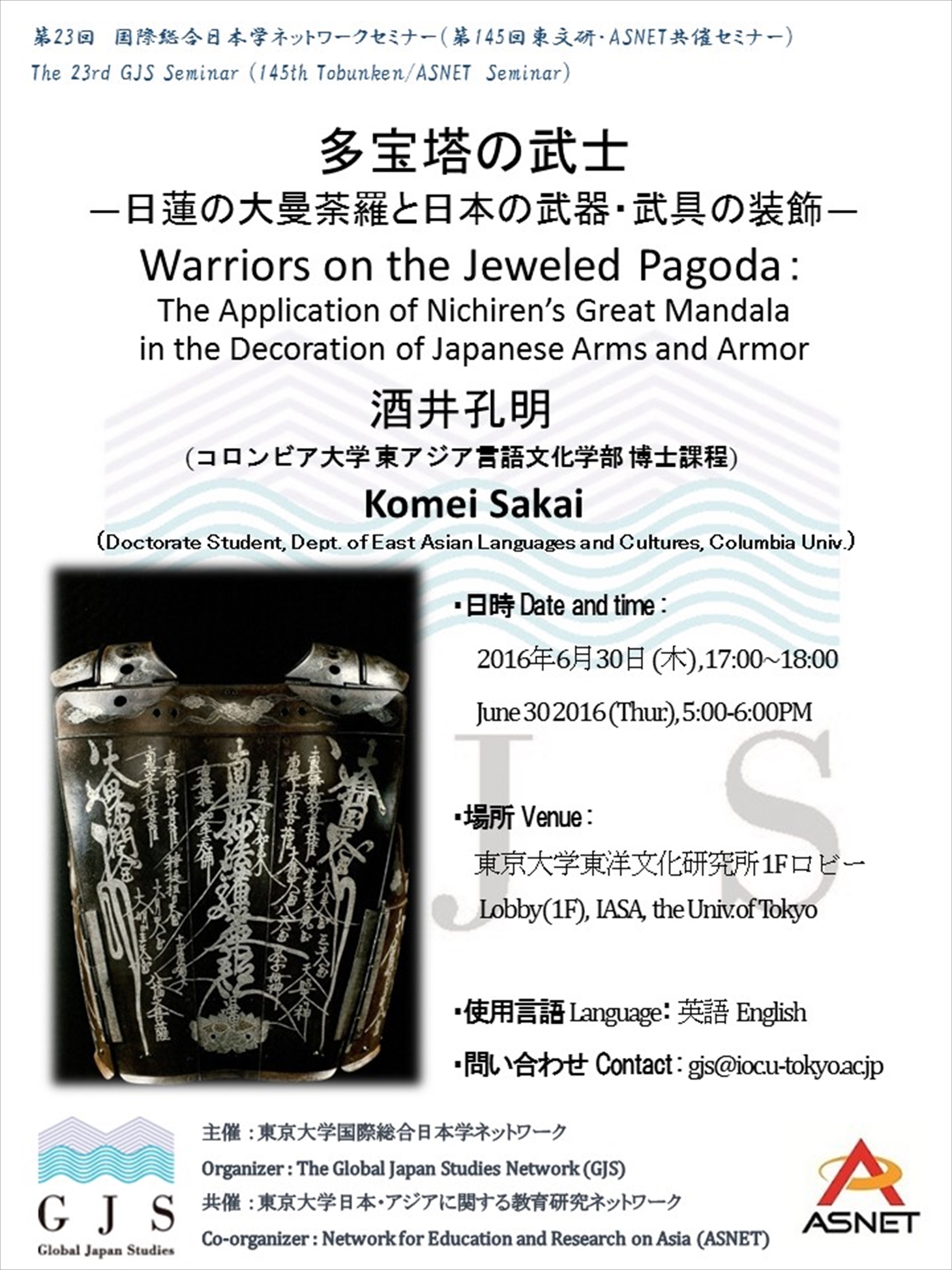The 23rd GJS Seminar(145th Tobunken/ASNET Seminar)Warriors on the Jeweled Pagoda:The Application of Nichiren’s Great Mandala in the Decoration of Japanese Arms and Armor
| Date and time: | June 30, 2016 (Thur.), 5:00-6:00PM |
|---|---|
| Venue: | Lobby (1F), Institute for Advanced Studies on Asia, The University of Tokyo |
| Speaker: | Komei Sakai (Doctorate Student, Department of East Asian Languages and Cultures, Columbia University) |
| Language: | English |

Abstract: The Kumamoto Castle, one of the Three Famous Castles of Japan, was the residence of Katō Kiyomasa, a warlord from the Momoyama period. Through his achievements at the Battle of Shizugatake (1583), Kiyomasa was honored by his master, Hashiba Hideyoshi, with the title of one of the “Seven Spearmen of Shizugatake.” Consequently, when referring to Kiyomasa, his aspect as a “brave” warrior is usually emphasized. However, the fact that Kiyomasa was not only a “brave” warrior, but also a “devout” follower of the Nichiren School Buddhism, is not very well known. On the battlefield, the banner inscribed with the seven characters of “Namu Myōhō Renge-kyō (literally, ‘Homage to the Lotus Sutra’)” fluttered at Kiyomasa’s military camp. Throughout the Japanese history, not only Kiyomasa, but many samurais followed the teaching of the Nichiren School, and they boldly expressed their faith on their swords and armor on which their lives depended. In this presentation, I begin my analysis with an undershirt for armor from the Boshin War (1868–1869) inscribed with the Great Mandala, the main object of worship of the Nichiren School. This is the latest example of arms and armor with Nichiren School-related decoration. Then, I trace the development of arms and armor with the Nichiren School-inspired design through the chronological survey of their extant examples, such as the renowned Muromachi period sword blade “Myōhō Muramasa,” an exotic helmet from the Momoyama period ascribed to Kiyomasa, and a cuirass from the Edo period. Through this study of the samurai’s worship of the Nichiren School on the battlefield, I seek to understand the seemingly contradictory relationship between Buddhism and war.
Organizer: The Global Japan Studies Network (GJS)Co-organizer: Institute for Advanced Studies on Asia, Network for Education and Research on Asia (ASNET)
Contact: gjs[at]ioc.u-tokyo.ac.jp



